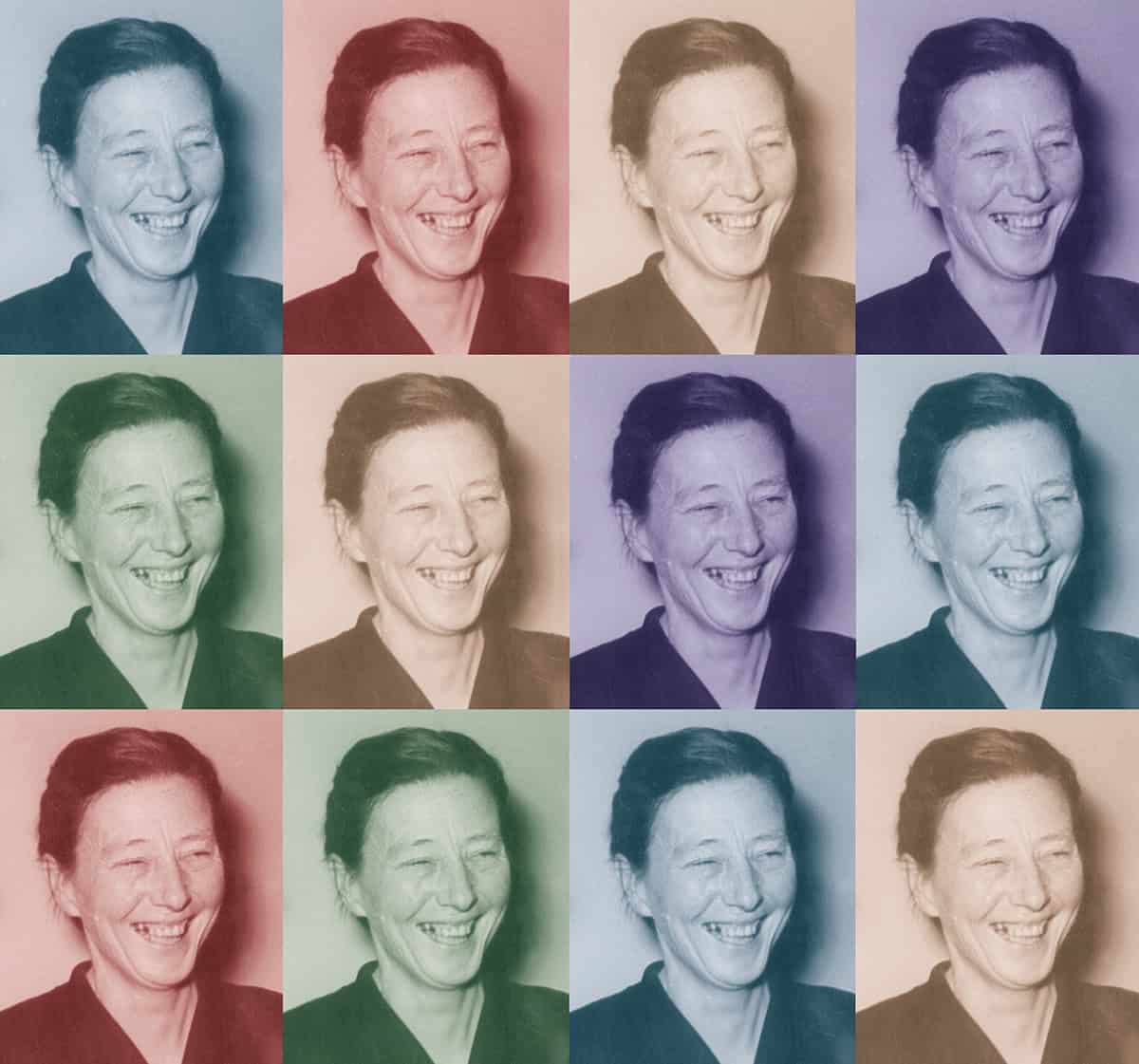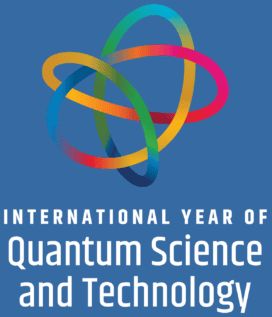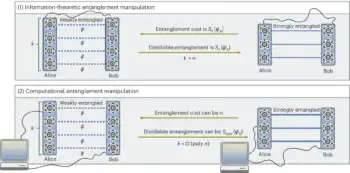
Part of our International Year of Quantum Science and Technology coverage
Sidney Perkowitz uncovers the pioneering work of the German physicist and philosopher Grete Hermann, who sparred with the likes of Werner Heisenberg and John von Neumann – but whose contributions to quantum science have only recently come to light

In the early days of quantum mechanics, physicists found its radical nature difficult to accept – even though the theory had successes. In particular Werner Heisenberg developed the first comprehensive formulation of quantum mechanics in 1925, while the following year Erwin Schrödinger was able to predict the spectrum of light emitted by hydrogen using his eponymous equation. Satisfying though these achievements were, there was trouble in store.
Long accustomed to Isaac Newton’s mechanical view of the universe, physicists had assumed that identical systems always evolve with time in exactly the same way, that is to say “deterministically”. But Heisenberg’s uncertainty principle and the probabilistic nature of Schrödinger’s wave function suggested worrying flaws in this notion. Those doubts were famously expressed by Albert Einstein, Boris Podolsky and Nathan Rosen in their “EPR” paper of 1935 (Phys. Rev. 47 777) and in debates between Einstein and Niels Bohr.
But the issues at stake went deeper than just a disagreement among physicists. They also touched on long-standing philosophical questions about whether we inhabit a deterministic universe, the related question of human free will, and the centrality of cause and effect. One person who rigorously addressed the questions raised by quantum theory was the German mathematician and philosopher Grete Hermann (1901–1984).
Hermann stands out in an era when it was rare for women to contribute to physics or philosophy, let alone to both. Writing in The Oxford Handbook of the History of Quantum Interpretations, published in 2022, the City University of New York philosopher of science Elise Crull has called Hermann’s work “one of the first, and finest, philosophical treatments of quantum mechanics”.
Grete Hermann upended the famous ‘proof’, developed by the Hungarian-American mathematician and physicist John von Neumann, that ‘hidden variables’ are impossible in quantum mechanics
What’s more, Hermann upended the famous “proof”, developed by the Hungarian-American mathematician and physicist John von Neumann, that “hidden variables” are impossible in quantum mechanics. But why have Hermann’s successes in studying the roots and meanings of quantum physics been so often overlooked? With 2025 being the International Year of Quantum Science and Technology, it’s time to find out.
Free thinker
Hermann was born on 2 March 1901 in the north German port city of Bremen. One of seven children, her mother was deeply religious, while her father was a merchant, a sailor and later an itinerant preacher. According to the 2016 book Grete Hermann: Between Physics and Philosophy by Crull and Guido Bacciagaluppi, she was raised according to her father’s maxim: “I train my children in freedom!” Essentially, he enabled Hermann to develop a wide range of interests and benefit from the best that the educational system could offer a woman at the time.
She was eventually admitted as one of a handful of girls at the Neue Gymnasium – a grammar school in Bremen – where she took a rigorous and broad programme of subjects. In 1921 Hermann earned a certificate to teach high-school pupils – an interest in education that reappeared in her later life – and began studying mathematics, physics and philosophy at the University of Göttingen.
In just four years, Hermann earned a PhD under the exceptional Göttingen mathematician Emmy Noether (1882–1935), famous for her groundbreaking theorem linking symmetry to physical conservation laws. Hermann’s final oral exam in 1925 featured not just mathematics, which was the subject of her PhD, but physics and philosophy too. She had specifically requested to be examined in the latter by the Göttingen philosopher Leonard Nelson, whose “logical sharpness” in lectures had impressed her.

By this time, Hermann’s interest in philosophy was starting to dominate her commitment to mathematics. Although Noether had found a mathematics position for her at the University of Freiburg, Hermann instead decided to become Nelson’s assistant, editing his books on philosophy. “She studies mathematics for four years,” Noether declared, “and suddenly she discovers her philosophical heart!”
Hermann found Nelson to be demanding and sometimes overbearing but benefitted from the challenges he set. “I gradually learnt to eke out, step by step,” she later declared, “the courage for truth that is necessary if one is to utterly place one’s trust, also within one’s own thinking, in a method of thought recognized as cogent.” Hermann, it appeared, was searching for a path to the internal discovery of truth, rather like Einstein’s Gedankenexperimente.
After Nelson died in 1927 aged just 45, Hermann stayed in Göttingen, where she continued editing and expanding his philosophical work and related political ideas. Espousing a form of socialism based on ethical reasoning to produce a just society, Nelson had co-founded a political action group and set up the associated Philosophical-Political Academy (PPA) to teach his ideas. Hermann contributed to both and also wrote for the PPA’s anti-Nazi newspaper.
Hermann’s involvement in the organizations Nelson had founded later saw her move to other locations in Germany, including Berlin. But after Hitler came to power in 1933, the Nazis banned the PPA, and Hermann and her socialist associates drew up plans to leave Germany. Initially, she lived at a PPA “school-in-exile” in neighbouring Denmark. As the Nazis began to arrest socialists, Hermann feared that Germany might occupy Denmark (as it indeed later did) and so moved again, first to Paris and then London.
Amid all these disruptions, Hermann continued to bring her dual philosophical and mathematical perspectives to physics, and especially to quantum mechanics
Arriving in Britain in early 1938, Hermann became acquainted with Edward Henry, another socialist, whom she later married. It was, however, merely a marriage of convenience that gave Hermann British citizenship and – when the Second World War started in 1939 – stopped her from being interned as an enemy alien. (The couple divorced after the war.) Amid all these disruptions, Hermann continued to bring her dual philosophical and mathematical perspectives to physics, and especially to quantum mechanics.
Mixing philosophy and physics
A major stimulus for Hermann’s work came from discussions she had in 1934 with Heisenberg and Carl Friedrich von Weizsäcker, who was then his research assistant at the Institute for Theoretical Physics in Leipzig. The previous year Hermann had written an essay entitled “Determinism and quantum mechanics”, which analysed whether the indeterminate nature of quantum mechanics – central to the “Copenhagen interpretation” of quantum behaviour – challenged the concept of causality.
Much cherished by physicists, causality says that every event has a cause, and that a given cause always produces a single specific event. Causality was also a tenet of the 18th-century German philosopher Immanuel Kant, best known for his famous 1781 treatise Critique of Pure Reason. He believed that causality is fundamental for how humans organize their experiences and make sense of the world.
Hermann, like Nelson, was a “neo-Kantian” who believed that Kant’s ideas should be treated with scientific rigour. In her 1933 essay, Hermann examined how the Copenhagen interpretation undermines Kant’s principle of causality. Although the article was not published at the time, she sent copies to Heisenberg, von Weizsäcker, Bohr and also Paul Dirac, who was then at the University of Cambridge in the UK.
In fact, we only know of the essay’s existence because Crull and Bacciagaluppi discovered a copy in Dirac’s archives at Churchill College, Cambridge. They also found a 1933 letter to Hermann from Gustav Heckmann, a physicist who said that Heisenberg, von Weizsäcker and Bohr had all read her essay and took it “absolutely and completely seriously”. Heisenberg added that Hermann was a “fabulously clever woman”.
Heckmann then advised Hermann to discuss her ideas more fully with Heisenberg, who he felt would be more open than Bohr to new ideas from an unexpected source. In 1934 Hermann visited Heisenberg and von Weizsäcker in Leipzig, with Heisenberg later describing their interaction in his 1971 memoir Physics and Beyond: Encounters and Conversations.
In that book, Heisenberg relates how rigorously Hermann wanted to treat philosophical questions. “[She] believed she could prove that the causal law – in the form Kant had given it – was unshakable,” Heisenberg recalled. “Now the new quantum mechanics seemed to be challenging the Kantian conception, and she had accordingly decided to fight the matter out with us.”
Their interaction was no fight, but a spirited discussion, with some sharp questioning from Hermann. When Heisenberg suggested, for instance, that a particular radium atom emitting an electron is an example of an unpredictable random event that has no cause, Hermann countered by saying that just because no cause has been found, it didn’t mean no such cause exists.
Significantly, this was a reference to what we now call “hidden variables” – the idea that quantum mechanics is being steered by additional parameters that we possibly don’t know anything about. Heisenberg then argued that even with such causes, knowing them would lead to complications in other experiments because of the wave nature of electrons.

Suppose, using a hidden variable, we could predict exactly which direction an electron would move. The electron wave wouldn’t then be able to split and interfere with itself, resulting in an extinction of the electron. But such electron interference effects are experimentally observed, which Heisenberg took as evidence that no additional hidden variables are needed to make quantum mechanics complete. Once again, Hermann pointed out a discrepancy in Heisenberg’s argument.
In the end, neither side fully convinced the other, but inroads were made, with Heisenberg concluding in his 1971 book that “we had all learned a good deal about the relationship between Kant’s philosophy and modern science”. Hermann herself paid tribute to Heisenberg in a 1935 paper “Natural-philosophical foundations of quantum mechanics”, which appeared in a relatively obscure philosophy journal called Abhandlungen der Fries’schen Schule (6 69). In it, she thanked Heisenberg “above all for his willingness to discuss the foundations of quantum mechanics, which was crucial in helping the present investigations”.
Quantum indeterminacy versus causality
In her 1933 paper, Hermann aimed to understand if the indeterminacy of quantum mechanics threatens causality. Her overall finding was that wherever indeterminacy is invoked in quantum mechanics, it is not logically essential to the theory. So without claiming that quantum theory actually supports causality, she left the possibility open that it might.
To illustrate her point, Hermann considered Heisenberg’s uncertainty principle, which says that there’s a limit to the accuracy with which complementary variables, such as position, q, and momentum, p, can be measured, namely ΔqΔp ≥ h where h is Planck’s constant. Does this principle, she wondered, truly indicate quantum indeterminism?
Hermann asserted that this relation can mean only one of two possible things. One is that measuring one variable leaves the value of the other undetermined. Alternatively, the result of measuring the other variable can’t be precisely predicted. Hermann dismissed the first option because its very statement implies that exact values exist, and so it cannot be logically used to argue against determinism. The second choice could be valid, but that does not exclude the possibility of finding new properties – hidden variables – that give an exact prediction.
Hermann used her mathematical training to point out a flaw in von Neumann’s famous 1932 proof, which said that no hidden-variable theory can ever reproduce the features of quantum mechanics
In making her argument about hidden variables, Hermann used her mathematical training to point out a flaw in von Neumann’s famous 1932 proof, which said that no hidden-variable theory can ever reproduce the features of quantum mechanics. Quantum mechanics, according to von Neumann, is complete and no extra deterministic features need to be added.
For decades, his result was cited as “proof” that any deterministic addition to quantum mechanics must be wrong. Indeed, von Neumann had such a well-deserved reputation as a brilliant mathematician that few people had ever bothered to scrutinize his analysis. But in 1964 the Northern Irish theorist John Bell famously showed that a valid hidden-variable theory could indeed exist, though only if it’s “non-local” (Physics Physique Fizika 1 195).
Non-locality says that things can happen at different parts of the universe simultaneously without needing faster-than-light communication. Despite being a notion that Einstein never liked, non-locality has been widely confirmed experimentally. In fact, non-locality is a defining feature of quantum physics and one that’s eminently useful in quantum technology.
Then, in 1966 Bell examined von Neumann’s reasoning and found an error that decisively refuted the proof (Rev. Mod, Phys. 38 447). Bell, in other words, showed that quantum mechanics could permit hidden variables after all – a finding that opened the door to alternative interpretations of quantum mechanics. However, Hermann had reported the very same error in her 1933 paper, and again in her 1935 essay, with an especially lucid exposition that almost exactly foresees Bell’s objection.
She had got there first, more than three decades earlier (see box).
Grete Hermann: 30 years ahead of John Bell
According to Grete Hermann, John von Neumann’s 1932 proof that quantum mechanics doesn’t need hidden variables “stands or falls” on his assumption concerning “expectation values”, which is the sum of all possible outcomes weighted by their respective probabilities. In the case of two quantities, say, r and s, von Neumann supposed that the expectation value of (r + s) is the same as the expectation value of r plus the expectation value of s. In other words, <(r + s)> = <r> + <s>.
This is clearly true in classical physics, Hermann writes, but the truth is more complicated in quantum mechanics. Suppose r and s are the conjugate variables in an uncertainty relationship, such as momentum q and position p given by ΔqΔp ≥ h. By definition, measuring q eliminates making a precise measurement of p, so it is impossible to simultaneously measure them and satisfy the relation <q + p> = <q> + <p>.
Further analysis, which Hermann supplied and Bell presented more fully, shows exactly why this invalidates or at least strongly limits the applicability of von Neumann’s proof; but Hermann caught the essence of the error first. Bell did not recognize or cite Hermann’s work, most probably because it was hardly known to the physics community until years after his 1966 paper.
A new view of causality
After rebutting von Neumann’s proof in her 1935 essay, Hermann didn’t actually turn to hidden variables. Instead, Hermann went in a different and surprising direction, probably as a result of her discussions with Heisenberg. She accepted that quantum mechanics is a complete theory that makes only statistical predictions, but proposed an alternative view of causality within this interpretation.
We cannot foresee precise causal links in a quantum mechanics that is statistical, she wrote. But once a measurement has been made with a known result, we can work backwards to get a cause that led to that result. In fact, Hermann showed exactly how to do this with various examples. In this way, she maintains, quantum mechanics does not refute the general Kantian category of causality.
Not all philosophers have been satisfied by the idea of retroactive causality. But writing in The Oxford Handbook of the History of Quantum Interpretations, Crull says that Hermann “provides the contours of a neo-Kantian interpretation of quantum mechanics”. “With one foot squarely on Kant’s turf and the other squarely on Bohr’s and Heisenberg’s,” Crull concludes, “[Hermann’s] interpretation truly stands on unique ground.”
Grete Hermann’s 1935 paper shows a deep and subtle grasp of elements of the Copenhagen interpretation.
But Hermann’s 1935 paper did more than just upset von Neumann’s proof. In the article, she shows a deep and subtle grasp of elements of the Copenhagen interpretation such as its correspondence principle, which says that – in the limit of large quantum numbers – answers derived from quantum physics must approach those from classical physics.
The paper also shows that Hermann was fully aware – and indeed extended the meaning – of the implications of Heisenberg’s thought experiment that he used to illustrate the uncertainty principle. Heisenberg envisaged a photon colliding with an electron, but after that contact, she writes, the wave function of the physical system is a linear combination of terms, each being “the product of one wave function describing the electron and one describing the light quantum”.
As she went on to say, “The light quantum and the electron are thus not described each by itself, but only in their relation to each other. Each state of the one is associated with one of the other.” Remarkably, this amounts to an early perception of quantum entanglement, which Schrödinger described and named later in 1935. There is no evidence, however, that Schrödinger knew of Hermann’s insights.
Hermann’s legacy
On the centenary of the birth of a full theory of quantum mechanics, how should we remember Hermann? According to Crull, the early founders of quantum mechanics were “asking philosophical questions about the implications of their theory [but] none of these men were trained in both physics and philosophy”. Hermann, however, was an expert in the two. “[She] composed a brilliant philosophical analysis of quantum mechanics, as only one with her training and insight could have done,” Crull says.
Had Hermann’s 1935 paper been more widely known, it could have altered the early development of quantum mechanics
Sadly for Hermann, few physicists at the time were aware of her 1935 paper even though she had sent copies to some of them. Had it been more widely known, her paper could have altered the early development of quantum mechanics. Reading it today shows how Hermann’s style of incisive logical examination can bring new understanding.
Hermann leaves other legacies too. As the Second World War drew to a close, she started writing about the ethics of science, especially the way in which it was carried out under the Nazis. After the war, she returned to Germany, where she devoted herself to pedagogy and teacher training. She disseminated Nelson’s views as well as her own through the reconstituted PPA, and took on governmental positions where she worked to rebuild the German educational system, apparently to good effect according to contemporary testimony.
Hermann also became active in politics as an adviser to the Social Democratic Party. She continued to have an interest in quantum mechanics, but it is not clear how seriously she pursued it in later life, which saw her move back to Bremen to care for an ill comrade from her early socialist days.
Hermann’s achievements first came to light in 1974 when the physicist and historian Max Jammer revealed her 1935 critique of von Neumann’s proof in his book The Philosophy of Quantum Mechanics. Following Hermann’s death in Bremen on 15 April 1984, interest slowly grew, culminating in Crull and Bacciagaluppi’s 2016 landmark study Grete Hermann: Between Physics and Philosophy.
The life of this deep thinker, who also worked to educate others and to achieve worthy societal goals, remains an inspiration for any scientist or philosopher today.
This article forms part of Physics World‘s contribution to the 2025 International Year of Quantum Science and Technology (IYQ), which aims to raise global awareness of quantum physics and its applications.
Stayed tuned to Physics World and our international partners throughout the next 12 months for more coverage of the IYQ.
Find out more on our quantum channel.





